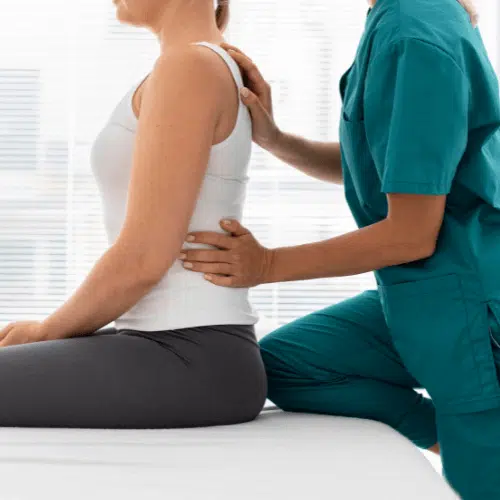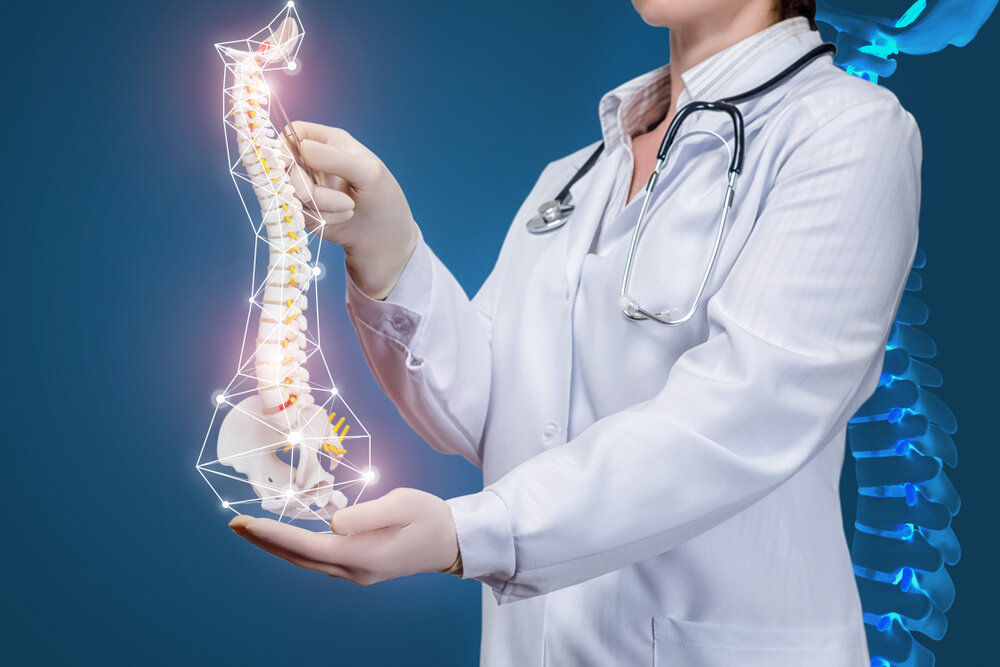The Latest Technologies by the Best Spine Surgeons in St Louis MO
Wiki Article
What Spinal Column Issues Usually Result In Surgical Treatments for Alleviation?
Spine problems that necessitate medical treatment often occur when conservative therapy choices stop working to supply ample alleviation from consistent discomfort and useful disability. Problems such as herniated discs, spine stenosis, and degenerative disc illness often lead to medical procedures aimed at restoring and reducing symptoms wheelchair.
Herniated Discs
Herniated discs are an usual spine condition that regularly leads to medical intervention when conservative therapies stop working. This problem occurs when the soft internal gel of a spinal disc sticks out with a tear in the harder outer layer, potentially compressing nearby nerves. Signs and symptoms commonly include local pain, emitting discomfort in the arm or legs, and neurological deficits such as tingling or weak point.
Surgical procedure aims to minimize pain and recover function by removing the herniated part of the disc or maintaining the affected spinal section. While many people experience significant improvement complying with surgical procedure, it is essential to evaluate the benefits and threats in consultation with a qualified spine expert. Eventually, timely intervention is necessary to improve and avoid additional issues lifestyle for people struggling with this devastating problem.
Spinal Constriction
Experiencing back constriction can significantly impact an individual's wheelchair and lifestyle. This problem happens when the spinal canal narrows, placing stress on the spinal cable and nerves. Generally seen in the lumbar (reduced back) and cervical (neck) areas, spine constriction often results from degenerative adjustments related to aging, such as arthritis, disc herniation, or enlarging of ligaments.Signs of spinal constriction can differ, however they typically include pain, feeling numb, prickling, and weakness in the extremities. These symptoms might aggravate with activity or prolonged standing and often boost with rest. In severe cases, people may experience difficulties with equilibrium and sychronisation, leading to an enhanced danger of falls.
When conservative therapies, such as physical therapy, drugs, and way of life modifications, fall short to ease symptoms, medical intervention might be thought about. Procedures like laminectomy or spinal blend goal to decompress the damaged nerves and support the back. Early diagnosis and therapy are vital in handling back stenosis properly and preserving flexibility, eventually enhancing the person's overall top quality of life.
Spondylolisthesis
Spondylolisthesis occurs when one vertebra slides onward over the one below it, possibly resulting in back instability and nerve compression. This condition can develop from numerous elements, including hereditary flaws, degenerative changes, trauma, or recurring stress injuries. Signs frequently include reduced back pain, stiffness, and radiating discomfort in the legs, which can substantially influence daily activities and general lifestyle.Medical diagnosis usually entails an extensive scientific analysis, imaging studies such as X-rays or MRI, and assessment of neurological function. The degree of slippage is categorized right into qualities, with higher qualities get redirected here showing much more serious variation and a higher chance of medical treatment.

Very early medical diagnosis and proper administration are important in enhancing and avoiding further difficulties patient results. As spondylolisthesis can lead to chronic pain and disability, prompt intervention is essential for recovering spine health and wellness.
Degenerative Disc Disease
Degenerative Disc Disease (DDD) is a condition identified by the progressive degeneration of the intervertebral discs, which function as crucial shock absorbers in between the vertebrae of the spine. As these discs lose hydration and elasticity with time, they end up being less reliable at supporting the vertebrae, resulting in increased rubbing and tension on the back structures.People with DDD frequently experience signs such as persistent pain in the back, rigidity, and decreased flexibility (best spine surgeons in st louis mo). The condition can also lead to nerve compression if the deteriorated discs bulge or herniate, bring about radicular pain, weak point, or numbness in the arm or legs
Diagnosis normally involves a combination of checkups, imaging studies like MRI or CT scans, and patient history to analyze the severity of disc degeneration and its influence on daily tasks. Therapy choices array from conventional measures, consisting of physical therapy and discomfort administration, to even more intrusive procedures when traditional measures stop working. Surgical treatments, such as back blend or man-made disc replacement, may be shown for clients with considerable discomfort and useful impairment. In general, very early treatment and customized management techniques are necessary for minimizing try here the effects of DDD and enhancing individual end results.
Spine Lumps
Spinal lumps, which can be benign or deadly, represent an additional significant source of spinal problems that may necessitate medical treatment (best spine surgeons in st louis mo). These tumors can stem within the spinal column (primary lumps) or technique from various other parts of the body (second growths) Their presence can cause various signs and symptoms, including localized discomfort, neurological shortages, and changes in wheelchair
Surgical treatment for spine tumors commonly aims to alleviate signs and symptoms by removing the growth, stabilizing the spinal column, and addressing any kind of compressive results on the spine cord or nerves. Indications for surgical procedure normally include considerable pain not responsive to conservative treatments, or neurological impairment arising from the tumor's development.
/0x0:512x512/prod01/channel_2/media/mccms/content-assets/academics/residencies-and-fellowships/spine-surgery-fellowship-minnesota/overview/final-512X512-OR710-2020-10-05_0007.jpg)
It is vital for patients providing Homepage with signs and symptoms suggestive of spinal growths to undertake comprehensive diagnostic examinations, including imaging research studies and biopsies, to establish the appropriate strategy (best spine surgeons in st louis mo). Early discovery and treatment can dramatically improve client results and top quality of life
Verdict
In recap, numerous spine issues, including herniated discs, spine stenosis, spondylolisthesis, degenerative disc illness, and spine growths, commonly require medical treatment when traditional therapies stop working to supply alleviation. These problems result in considerable pain and practical disability, prompting the consideration of procedures such as discectomy, back blend, and laminectomy. Inevitably, surgical alternatives purpose to minimize pain, boost flexibility, and recover top quality of life for people impacted by these disabling spine conditions.Problems such as herniated discs, back constriction, and degenerative disc illness often lead to surgical procedures aimed at recovering and easing symptoms movement.Herniated discs are a common back condition that frequently leads to medical intervention when conventional treatments fall short. Surgical treatments, such as spinal blend or man-made disc replacement, might be suggested for clients with significant discomfort and functional problems.Spine tumors, which can be benign or deadly, represent one more significant reason of spinal problems that might require surgical treatment.In summary, different spine problems, including herniated discs, spine stenosis, spondylolisthesis, degenerative disc condition, and spinal lumps, commonly necessitate medical treatment when conventional therapies stop working to provide relief.
Report this wiki page